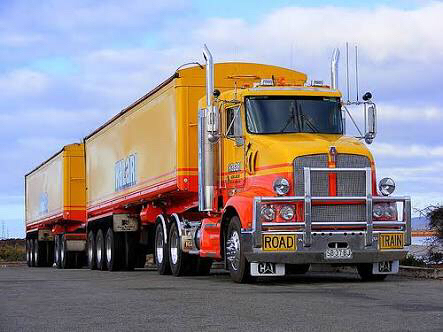Title Page
-
Conducted on
-
Prepared by
Visitor Induction Training
-
It is recommended that a minimum of two skid crew members and the Foreman have had satisfactory training on how to conduct a Visitor Induction. The following is a checklist of what the minimum requirements of a Visitor Induction should consist of.
Contractors will also require to be site inducted on their first initial visit to each work site area (by crew not each setting location).
The Trainee acknowledges that they understand and are confident to conduct a Visitor Induction as and when required. -
IMPORTANT:
All employees have the right to refuse a Visitor and/or Contractor access to any area of the work site if that person does not meet the relevant requirements or it is deemed unsafe for that person to visit the requested area.
At times it may be relevant for the visitor to remain at the Safe Zone/Area (if minimum PPE is correct) OR at the staff container.
On occasion a visitor may require a host for the entirety of the visit.
General Information
-
Date of training:
-
Name of person conducting training (Trainer):
-
Role of person conducting training (Trainer):
-
Location of training:
Trainee Details
-
Name of Trainee
-
Role of Trainee
Visitor Information
-
VISITOR IDENTIFICATION - name of person and the company they represent
-
VISITOR PURPOSE - understanding the reason for the visit to site identifies if that person/people require more information and checking than others (e.g. device mechanic requires identifying LOTO procedures, site work permit if conducting hot work etc).
-
VISITOR PARKING - ensure vehicle is not blocking access ways/roads and is parked facing the exit
Personal Protective Equipment
-
MINIMUM REQUIREMENTS - ensure the visitor has the minimum requirements of PPE (hard hat, steel capped lace up boots, hi visibility vest or jacket all in good condition)
-
VISITOR COMMUNICATION - ensure the visitor has the correct means of communication reasonable for the purpose of their visit (e.g RT radio with the correct crew channels)
-
EXTRA PPE - other PPE may be required if the purpose of their visit has other expectations of moving around the skid, in the cutover, with a manual tree Faller. All further PPE must be checked that it is correct for the purpose prior to commencing the visit.
Hazards
-
MULTI HAZARD SITE - due to the nature of the work site this is a multiple hazard site
-
CHAIN SHOT POLICY - ensure the visitor understands what Chain Shot is and our policy of not moving into the danger zone without clearance. If helpful show Chain Shot diagram in container (on notice board).
-
Where applicable - MECHANISED FELLER/BUNCHER - identify if a mechanised felling machine may be in operation and the distances required to be away from the machine and communication requirements.t
-
SITE SPECIFIC HAZARDS - identify if there are any specific hazards the visitor needs to be aware of for the day (e.g. closed roads, slippery roads, etc)
-
VISITOR PURPOSE HAZARDS - identify if there are any further hazards the visitor is required to understand and be wary of due to the reason/nature of their visit.
First Aid and Fire
-
FIRST AID - ensure the visitor understands the location of first aid kits but must inform a staff member if they require one (e.g. crew vehicles, QC, Processor or Loader on skid)
-
FIRE EXTINGUISHERS - identify the location of the fire extinguishers (e.g. crew vehicles and machines)
-
FIRST AIDERS & FIRE WARDENS - ID who are the crew first Aiders and who takes the role of a fire warden in the crew.
-
INCIDENT REPORTING - if necessary the visitor may need to report a near miss, incident etc. Ensure they understand that they must inform a crew member immediately to conduct an assessment of the situation prior to completing the relevant report.
Emergency Procedures
-
EMERGENCY PROCEDURES - ensure the following is understood: 1. Emergency Signals - e.g. one continuous blast on horn OR 'emergency, emergency, emergency over radio'. 2. Visitor must stay with host crew member OR tag onto the closest crew member and move with them to the Assembly Area. 3. Gather at the Assembly Area before moving to evacuation point - collect Daily Toolbox and Visitor Register Books & conduct a role call. 4. If all present - all move to evacuation point until further instructions are received. NOTE: A crew member is assigned to conduct communication with emergency services not a visitor.
-
ASSEMBLY of MUSTER AREA / EVACUATION POINT - Assembly/Muster area is the staff container then all should move to the Evacuation Point (e.g. HFF 37 approx 2k mark Poruporu/Pan Roads).
Visitor Register
-
VISITOR REGISTER - ensure the visitor is familiar with the Visitor Register and where it is located.
-
SIGN IN & SIGN OUT - ensure the visitor understands they must sign in and sign out on each visit to the site
Sign Off
-
To ensure the Trainee(s) understood the relevant Visitor Induction training requirements, they must complete the following quiz and gain a 100% pass (open book style).
Trainee Quiz
-
Trainee Name:
-
What needs to be collected and taken with the crew in the event of an evacuation?
-
Does a visitor need to report a near miss or incident?
-
Does a visitor need to wear PPE?
-
What type of work site does forestry occupy?
-
Is it necessary to understand the purpose/reason why a visitor is coming to the work site?
-
What should a visitor do each time they visit the work site?
-
Is it necessary for the visitor to understand the Chain Shot danger zone areas?
-
Where is the usual Assembly/Muster Area located?
-
If a visitor is auditing a manual tree Faller is he required to wear the same PPE gear?
-
Where is a first aid kit located on the skid?
-
If a visitor brings their vehicle to site, how should it be parked?
-
Where is the Visitor Register usually located?
-
Trainer Signature
Trainee Signature
-
Trainee Name










